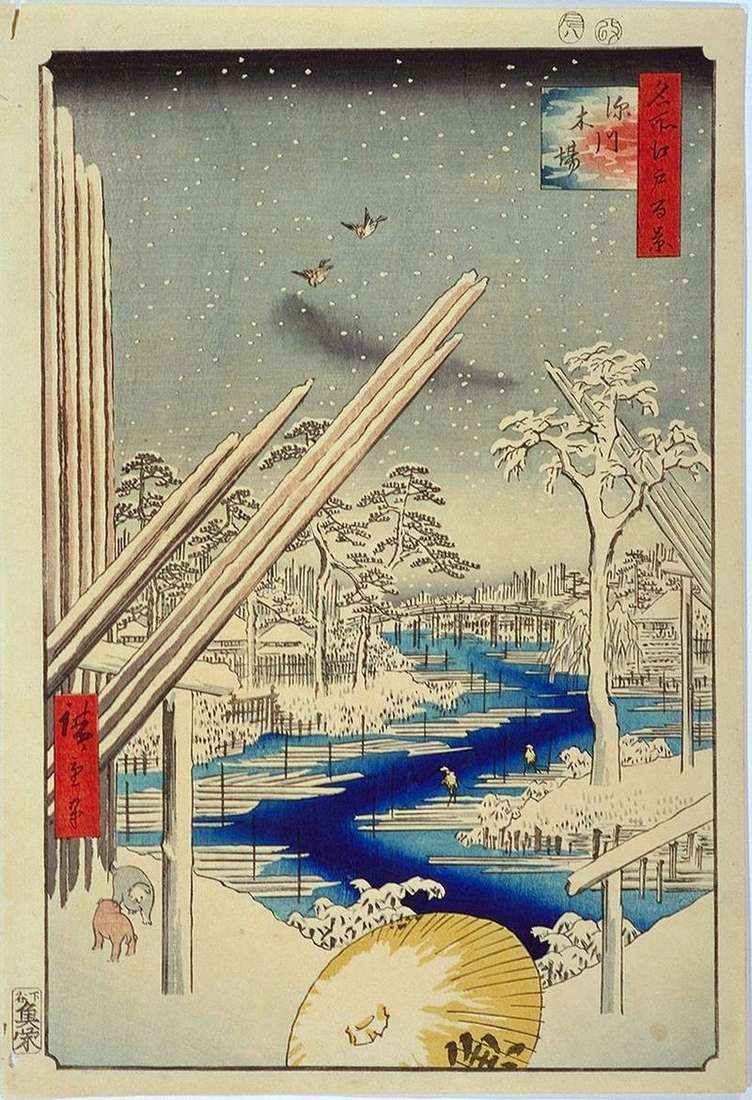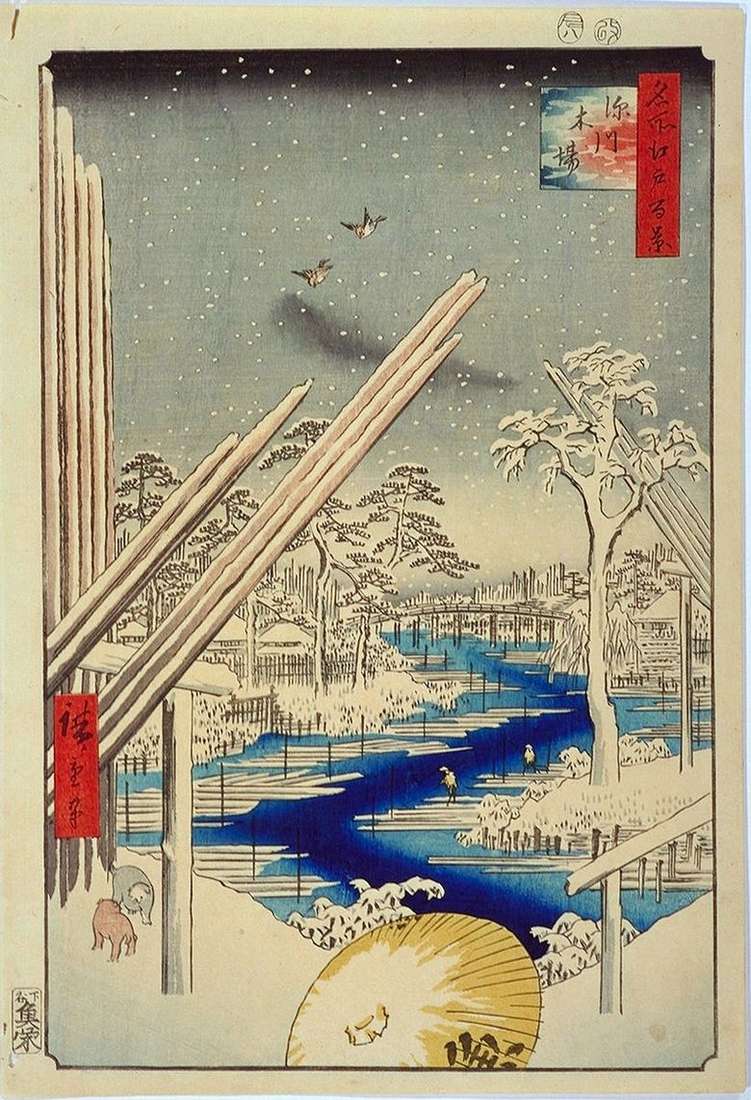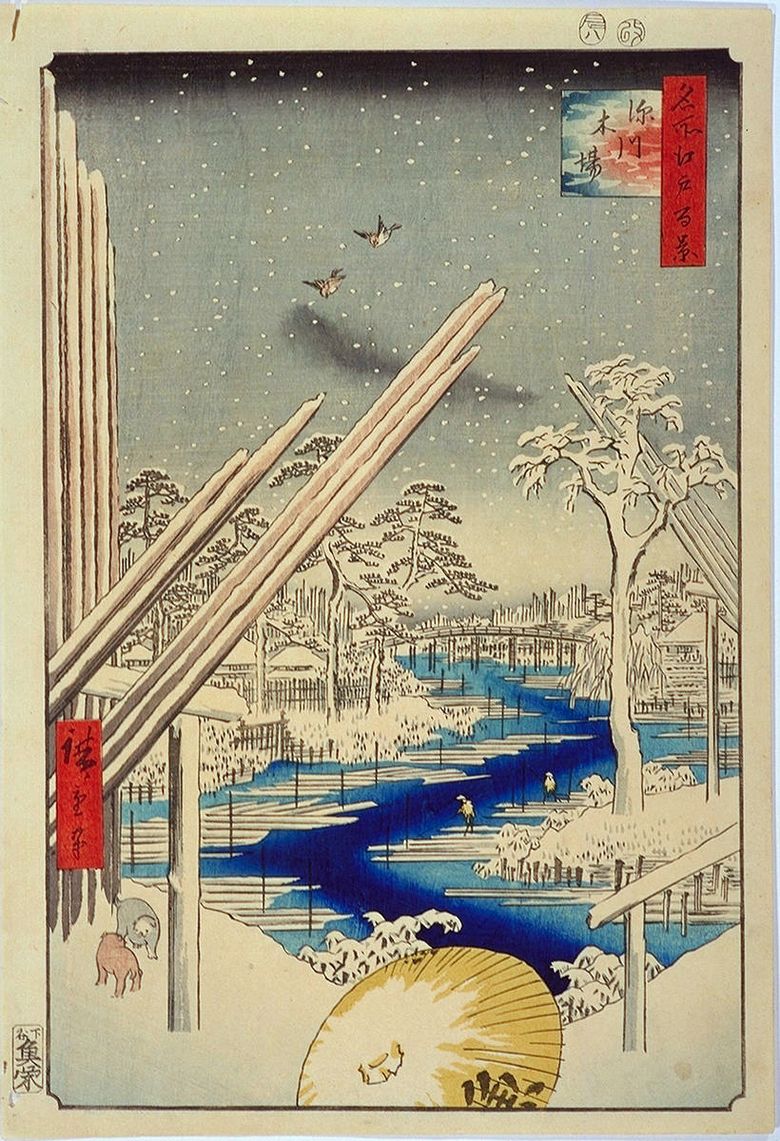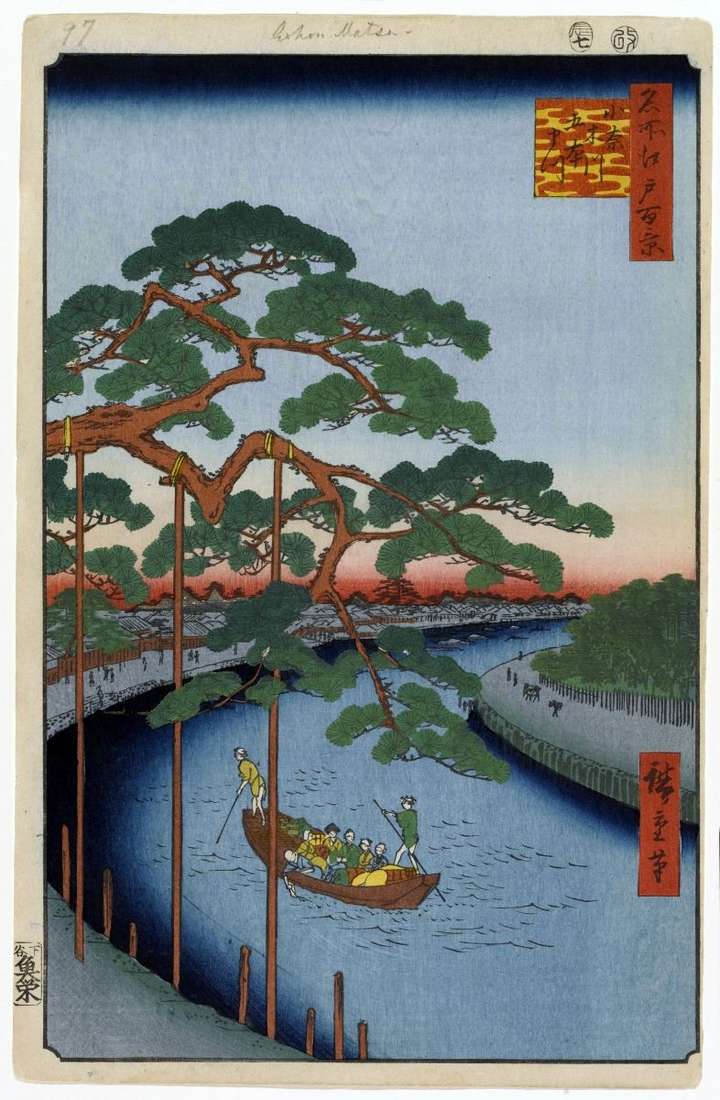
Houses in Edo were wooden, so they often burned. After major fires, there was a need for a forest to restore burnt houses. After the formation of the government of Bakufu, the first wholesale forest stores were located at the Edodze Castle on the banks of the Aosan-bori Canal. But, because of the expansion of the city and the possibility of fires, bakufu ordered them to move to Fukagawa in 1701. Here there were wood warehouses Fukagawa kiba. A dam was built around them, six channels were dug through which ten bridges were thrown. At the dam built houses.
Logs were stored in artificial ponds, which were connected to canals. They were delivered to their destination as rafts driven by special people – kavans, two of them, in yellow straw hats can be seen in engraving. Hiroshige paints a fairy-tale winter landscape. Snow-covered logs in the foreground sheet create a frame through which houses, trees, Fukagawa rafts covered with snow can be seen. In the foreground is a bamboo umbrella, on which the hieroglyph “uo” – “fish” is inscribed, this is the first component of the name of the publisher Woe Eikichi – “Woei”. The dark blue band of the boccas, passing along the center of the canal in the late IZENIYA leaf, as it were, emphasizes its bends. The bamboo umbrella in the foreground is not as bright as in the early leaf. The color of the square cartouche also changes.
 The area of Susaki and Dzyumantsubo in Fukagawa by Utagawa Hiroshige
The area of Susaki and Dzyumantsubo in Fukagawa by Utagawa Hiroshige Sanjusangendo Temple in Fukagawa by Utagawa Hiroshige
Sanjusangendo Temple in Fukagawa by Utagawa Hiroshige Almacenes de madera en Fukagawa – Utagawa Hiroshige
Almacenes de madera en Fukagawa – Utagawa Hiroshige Mannambasi Bridge in Fukagawa by Utagawa Hiroshige
Mannambasi Bridge in Fukagawa by Utagawa Hiroshige Entrepôts de bois de Fukagawa – Utagawa Hiroshige
Entrepôts de bois de Fukagawa – Utagawa Hiroshige The Kebasi Bridge and the Takegashi Embankment by Utagawa Hiroshige
The Kebasi Bridge and the Takegashi Embankment by Utagawa Hiroshige Quarter of Usimati, Takanava by Utagawa Hiroshige
Quarter of Usimati, Takanava by Utagawa Hiroshige Pine Goyhonmatsu on the Onagigawa Canal by Utagawa Hiroshige
Pine Goyhonmatsu on the Onagigawa Canal by Utagawa Hiroshige